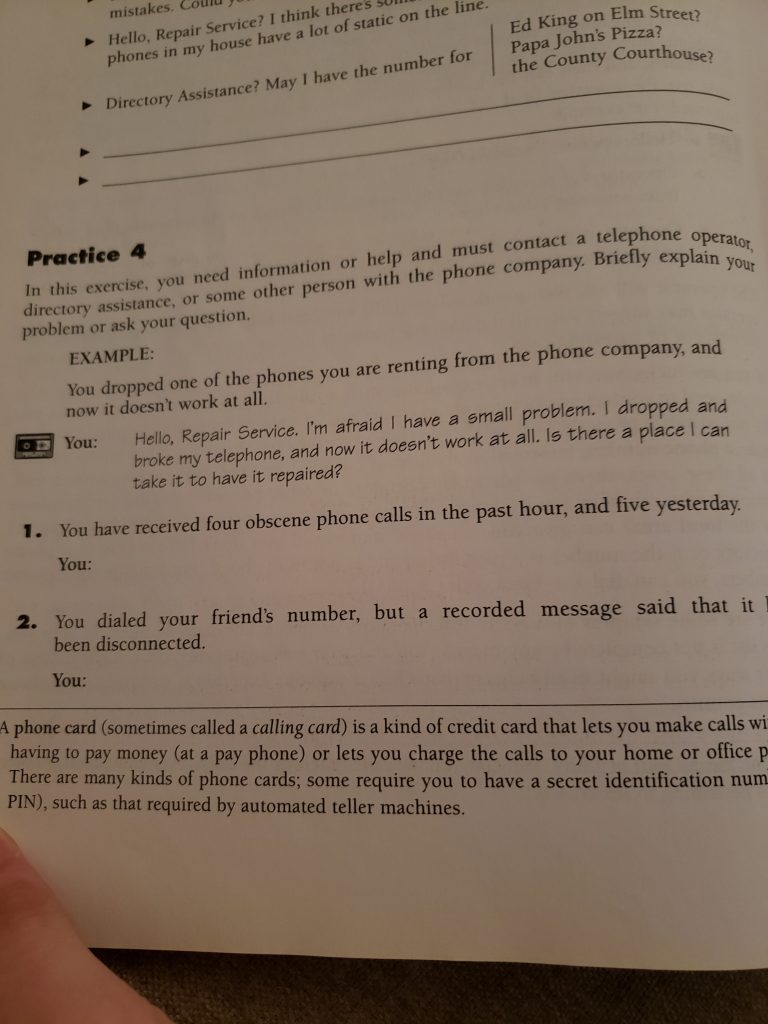
Activity number four in chapter one of “Say It Naturally” by Allie Patricia Wall could use some improvement, not only because it tasks learners with using a telephone operator to direct your call, but also because it is a solo activity that could easily be done in a group. One good thing about this activity is that it has the learner thinking about how to respond to real life situations. For example, one of the problems states “You have received four obscene phone calls in the past hour, and five yesterday.” The problem with some of these real-life situations is that the way people react to them has changed. In the book, this problem is meant to be sent to an operator who would then give you advice or direct your call to the police department. However, nowadays people who receive harassing calls can normally block the number, or just call the police right away, without the need of an operator.
For this, there are a few different approaches that could be used to teach the learner how to respond to these situations. One way is to have them write down a response on paper, which could be useful since most of the activities in the chapter are speaking activities. However, if we were to continue the theme of speaking activities (since the book is focused on improving communication skills), this could become a group activity. One person plays a friend that helps another person direct their call (in lieu of an operator) and the third person plays where their call ends up. A third way this activity could be done is by having the teacher come up with a situation on the spot and calling on individual students to respond to these situations.
Having this activity become a group activity would be extremely beneficial in building communication skills while also having students get to know one another better. The first student would be responsible with coming up with a situation to describe to the second student who is acting as their friend. This allows for critical thinking as the two other students have no idea what the first student will come up with and will have to think of a solution on the spot. Thinking of what to say in a situation where you don’t know what’s coming is a great way to build communication skills. An example of how this activity could go:
Student one: Hey, _____, this is _____. I’m receiving some really terrible phone calls from a private number and I don’t know what to do.
Student two: You can’t block the number since it’s set to private, so I really think you should call the police.
Student one: Okay, thanks. I’ll give them a try.
Student three: Hello, this is 911, what is your emergency?
Student one: I’m receiving harassing phone calls from a private number and am unsure what to do.
Student three: Okay, we’re sending an officer over to get a report.